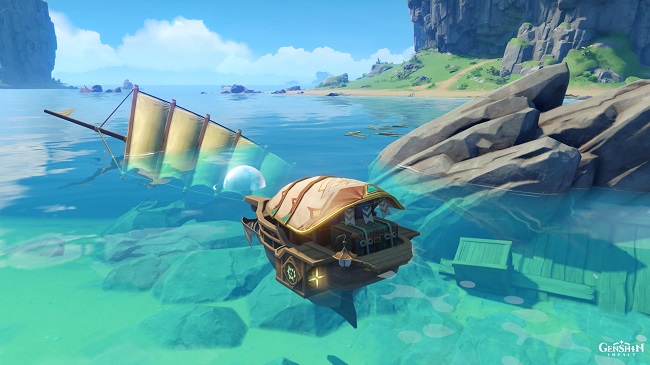The rain pounded against the glass. The wind howled with primordial ferocity, and the raging wave pummelling the ship’s steel hull. During the hot summer of 2010, it was the middle of the night. The 230-meter container ship Kota Kado had grounded outside of Hong Kong Harbor.
Captain Nick Sloane, a salvage expert, remained on the bridge in his life jacket after the rest of his crew had abandoned ship. He witnessed the ferocity of the hurricane as it raged in the night above the disabled ship.
Search For Whatever the Ship was Carrying

There were only five people on the salvage team, including Sloane, who were locked up in the shelter. In an effort to rescue the Kota Kado, they had travelled to the South China Sea a few days previously. Sloane decided to spend the night on board with a small crew when typhoons were predicted to hit the ship while it was docked.
He was curious as to how the ship flexed in the storm, hoping to gain insight into the areas that were taking the most damage. It almost didn’t happen though. On that fateful evening, “we nearly lost her,” he adds.
Read Also:
- Randy Savage Garage Cause of Death
- Jobless Reincarnation Season 2 Release Date
- Rivian Stock Falls Again as Production And Sales Woes Bite
It’s not always smooth sailing for the cargo ships that carry 90% of the world’s merchandise. Allianz’s Safety and Shipping Assessment states that 357 cargo ships were lost in the last decade, 27 of which occurred in 2021.
The items ignite. Unfortunately, they run into obstacles like reefs and beach bars. It breaks down all the time. But, not all of them drown. Large ships are worth tens or hundreds of millions of dollars, therefore their owners will nearly always jump at the chance to save them if they can.
For Assistance in Such an Emergency, Shipping Companies will Often Contact Salvors.
They have also witnessed some unusual events while at sea. When the massive cargo ship Ever Given ran aground last year, blocking the Suez Canal and disrupting international shipping routes, rescuers were dispatched to the scene.
Yet, when a ship weighing tens of thousands, or even hundreds of thousands of tonnes, becomes stranded. The phone rang as Sloane, now a director at Resolve Marine Group, was returning home from a World Cup match in South Africa, and he learned that the Kota Kado had run into problems. He took a flight to Hong Kong the following day.
On its journey to the harbour, the ship had collided with a reef, slicing a hole in its side. After running into a silt bank about 25 nautical miles (46 km) southwest of her route, two cargo holds began filling with water and she began to settle.
The bow slammed into the bottom of the ocean, entangling her. The ship began to go down as more water rushed on board. Sloane recalls that “a lot of the surveyors stated, ‘OK, the ship’s fully lost, get ready for a wreck removal contract.'” But he still had hope that she would make it.
“She continued to sink, and the bow sank another half a metre to a metre (1.6-3.2ft) every day,” he claims. The outcome was in the balance. Sloane and his coworkers devised a strategy to lighten the ship by draining all of the water from her hull.
Lighter barges, which in Hong Kong have big cranes on board, were needed for this. Fortunately, this is a common method of unloading goods in Hong Kong, so there were plenty of barges available, and the drivers were used to heaving containers off ships and onto the barges.
Sloane Insisted that All Cargo be Unloaded Immediately.
Almost 1,200 individual containers were rescued by the lighters. It would take a lot of time and effort to do this procedure, made even more so by the fact that the Kota Kado was anchored with her bow submerged.
It takes even longer to get to the heavy containers whose removal actually makes a difference since the lightest containers are stacked on top, since this serves to reduce a ship’s centre of gravity and keep her stable.
Next, there came the enormous snorkels. Sloane and his colleagues submerged several massive pumps in one of the ship’s cargo holds in order to remove water from the vessel. Furthermore, they took out hatches on the upper deck and welded enormous rectangular tubes, or snorkels, onto them.
The snorkels were dangling below the ship’s hull. At last, a group of divers linked the pumps down below to two sets of pipes that ran vertically up through the snorkels. Sloane recalls that the pumps worked at full capacity to prevent water from entering the engine room, which houses the ship’s most expensive and delicate machinery.
Once the salvage crew had pumped out enough water from the hold, they were able to use air to float the ship back up. To quote Sloane: “When you get below 10m (33ft), you’ve got to be very careful about how much pressure you inject.” If they had attempted this sooner, the tanks would have exploded.
All of this laborious effort paid off when the Kota Kado was rescued and brought to a shipyard for repairs following not one but two typhoons, the second of which was extremely terrible. While now going by a different name, she is still actively sailing.
Ships can be torn apart by natural disasters if they get stuck in mud or pinned against rocks, both of which they were not meant to do. That’s why typhoons and hurricanes posed such a serious problem for the Kota Kado.
Read Also:
- Seraph of the End Season 3 Release Date
- New Orleans Tornadoes Leave a Path of Destruction
- Outer Range Throws Josh Brolin Into a Trippy Western That
The more you bend it, the more likely it is to break, explains Rosalind Blazejczyk, managing partner and naval architect at Solis Marine Consultants. She describes the difficulties that arise when waves repeatedly raise or twist a ship that is grounded.
With a surf or at high tide, they can slam into it for hours, lifting one end of the boat and tossing it back down. In the face of danger, even steel seems weak. Sloane reveals that his crew may occasionally attach massive girders to the deck of a ship for no other reason than to keep it afloat.


